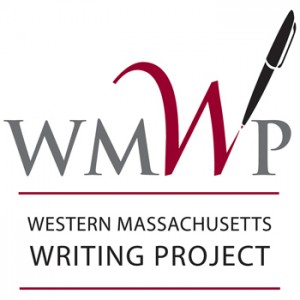Earlier this fall, I saw a call by Bud Hunt to join a class at P2PU, which is a space for open courses. Bud’s class was centered around writing and the Common Core standards. I jumped at the chance not only to explore the Common Core with the writing focus, but also to figure out what a Massively Online Open Course (or MOOC) was all about. I found it fascinating that free courses are available, although what we also found is that while a lot of people join at the start, only a few make it to the end. It’s all driven by intrinsic motivation, by the desire to learn, and not because you paid a few hundred dollars to go to class.
Bud structured the class with various entry paths — from discussions, and activities, and webinars each week. We also were tasked with designing a lesson plan or project, or redesigning an existing one, with the new frameworks in mind. (I did mine on an imaginary land brochure project. I’ll share that revamped lesson plan on another day).
It was engaging work, picking apart the writing strand of the Common Core and then reflecting on what it is all about with other folks. We talked about the strengths (connections to technology, complexity of thinking, connections to content areas, etc.) and weaknesses (shift from narrative writing, etc.) I found the whole process of the course incredibly valuable as our state now has new curriculum standards based on the Common Core and our school district is revamping our curriculum to meet the new state standards. Also, our Western Massachusetts Writing Project is emerging as a leader in curriculum design around the Common Core in our region.
One fascinating thing about P2PU is that anyone can start a course.
If you go to their homepage, you can see the wide variety of offerings — from computer programming to writing poetry to learning how to draw. You could leverage that openness of the site for more online groups and classes, although the connection to graduate credits and professional development advancement is tenuous right now, and depends a lot on the state in which you live. Another interesting element is that all of the classes offered at P2PU, and at most MOOC sites, become “modules” that anyone can then borrow, adapt and re-use for their own purposes.
Think about that. As time moves on, there will be entire databases of learning packets that organizations, such as the National Writing Project, might be able to use for online professional development, even as your own expertise gets meshed into the overall architecture of learning. I suppose there will be concerns about “ownership” of ideas and whatnot, but I think this is an interesting shift around learning possibilities.
The other night, I joined some other teachers on Teachers Teaching Teachers to chat about MOOCs and the online learning experience. Here is the video of the chat we had, posted by TTT host Paul Allison.
Peace (in the open),
Kevin


